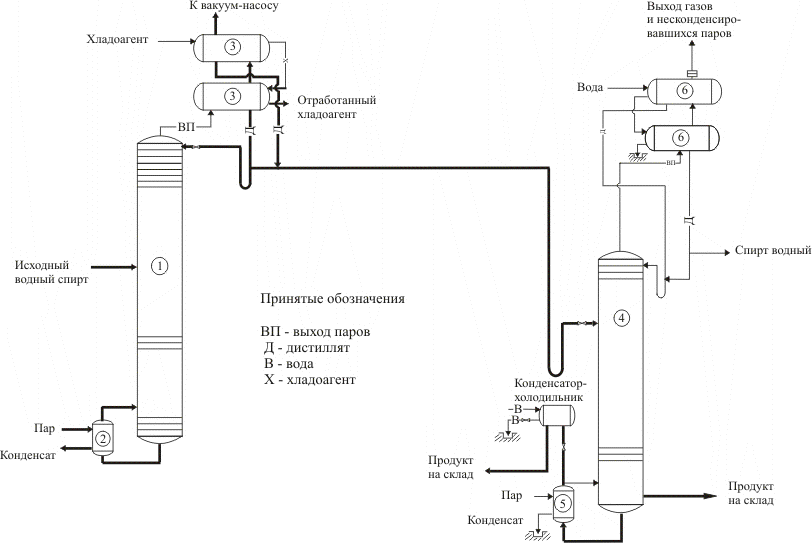Manufacturing process of absolutized alcohol obtaining without usage of reactants
The introduction of ethanol in petrol provides increase of an octane rating of fuel that allows refusing from introduction to petrol of tetraethyl lead. Each 3% of ethanol in a mixture provides increase of an octane rating of fuel on the average on 1 unit. Ethanol increases antiknock rating of fuel, as temperature of spontaneous combustion of pure petrol - 290░č, and its mixture with ethanol - 425░č. At usage of, alcohol-gasoline blend the toxicity of exhaust gases and fuel consumption and above run of motor vehicles as contrasted to by petrol fuel is much lower.
The transition of European countries to gasolines adequate the standards "Euro-*", will allow essentially to improve ecological conditions. The automotive gasolines of these standards differ by the heightened contents of oxygen (up to 2,3 - 2,7 %), which is stipulated by presence at them of the lowest alcohols and simple ethers under non-proprietary name oxygenates, one of which and is ethanol..
The transition of our country to the requirements of standards similar "Euro -*", is foregone will demand application of oxygenates. The recommended density of oxygenates in petrol makes from 3 up to 20% on a volume.
However received by customary methods of rectification the ethanol cannot contain more than 95,57% on mass of the main matter, that corresponds to the contents of ethanol in azeotropic mixture with water at normal pressure. With increase density of water ethanol in petrol the probability of stratifying of a fuel mixture with occurrence of water ethanol layer is increased. A corollary it is the decrease of an octane rating and increase of probability of a machinery fault, especially in wintertime. Thus, the application of ethanol as a component of engine fuel requires deeper deleting of water, i.e. its dehydration.
For our country one of most acceptable with the technological and ecological points of view by a way of absolutized alcohol obtaining is azeotropic rectification with usage two rectification columns (Fig. 1) working at different pressure.

Fig.1 The simplified technological scheme of alcohol dehydration
